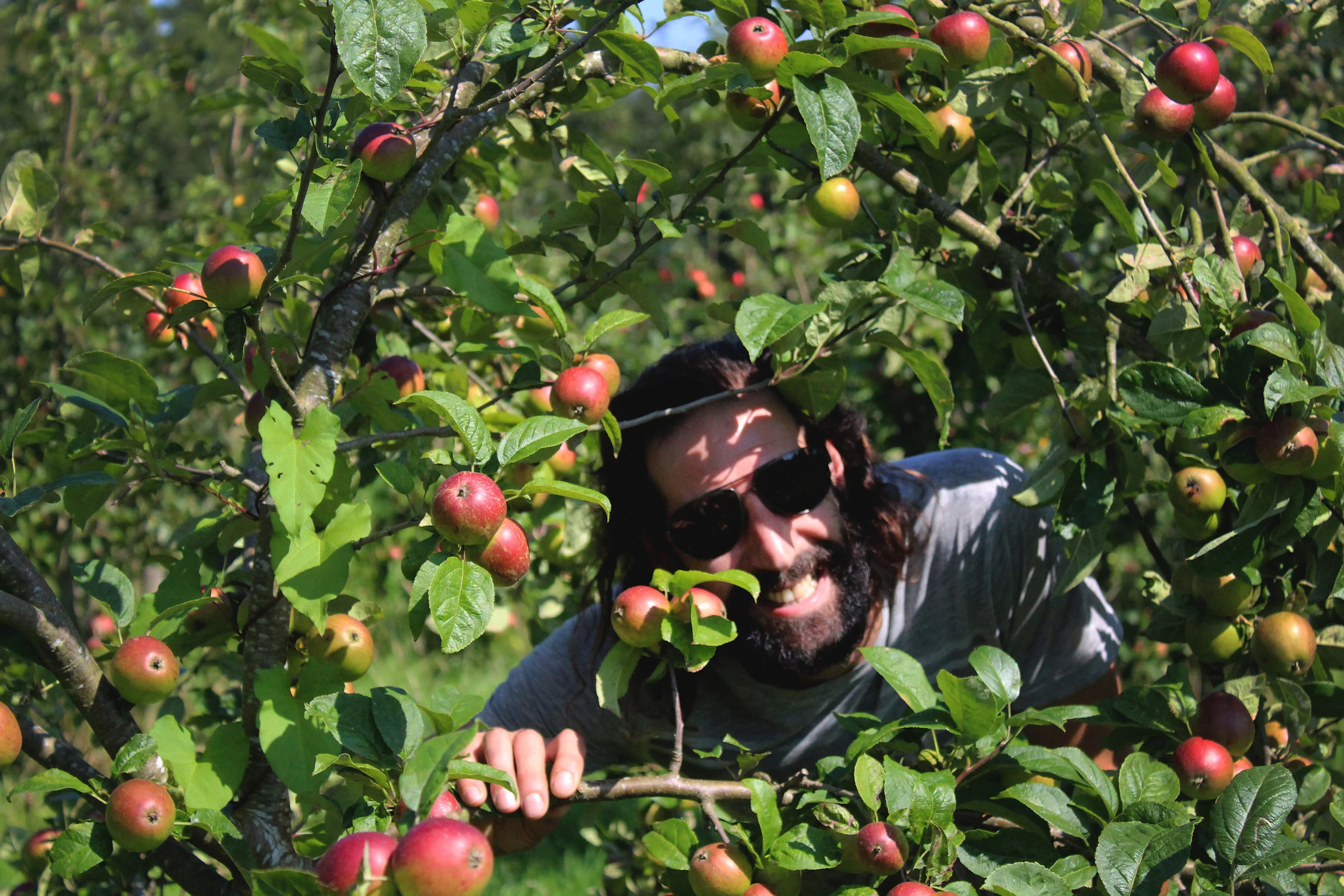Bag Reputation — On Draught Real Cider’s Lacking Quality and Reliability
Most cider served in pubs is not good enough. Not yet.
There—I’ve said it. Over years of writing about cider and perry I’ve tiptoed around the edges of this statement with a few pointed comments and insinuations, but it’s time to be explicit, and it bears repeating:
The majority of cider available in pubs, bars, and restaurants in the UK is currently dilute, improperly kept, or outright faulty.
I’m not only talking about chains, pubcos, and brewery-owned pubs. Or about the cynical, apple-dressed-as-lager stuff; the ubiquitous macro brands spawned when breweries started buying up cideries in the 1960s and, between the twin pillars of water and concentrate, hauled cider step by step away from its agricultural, orchard-centric roots. If you’re reading this you likely know what those are, and where you stand with them. It’s certainly true they have dealt full-juice cider lasting reputational damage and that the frequent lack of alternatives in chain pubs is distressing.
But particularly, I’m talking about the ciders that purport to be something better, something a cut above. The stuff you see on the back bar with labels like “craft”, “traditional”, and “real”. The ciders whose primary rallying cry is “drink us—we’re not Strongbow”. Mainly I’m talking about bag-in-boxes, colloquially known as “BiBs”.
Before enumerating the woes of the pub BiB cider drinker, a quick word on the format. In simple terms, a ‘BiB’ consists of a plastic bladder inside a cardboard box, which deflates as the cider or perry is dispensed, minimising exposure to oxygen and thus keeping the cider fresh for an extended window.
It is extraordinarily practical, easy to use, easy to store, and doesn’t take up a keg line. It allows publicans to offer customers tasters—no bottles to open—and it is a very cheap and simple way for small makers to package their ciders and get listings at a local free house.
Their convenience has made them the touchpoint for the general British consumer’s idea of what “real” cider is, as distinct from the macro keg. It is the staple of the cider festival, CAMRA or otherwise, and by far the most common form of dispense where “traditional” cider is served at a pub.
““People don’t drink real cider because they think they don’t like it. Whereas really they had the equivalent of a room temperature can of Carling and have decided they don’t like craft beer.””
When made by the most careful and conscientious producers and served by publicans who care deeply about cider and perry, and want to present them at their best, they offer some of the best drinking—and unquestionably best value—of any ciders or perries made anywhere in the world; fresh, clean, full-juice expressions of apple and pear, often available for a barely believable £3-4 a pint.
***
So much for the upsides. The issues will take longer.
To fully understand them, a parallel from the world of beer is helpful. In 2017 Pete Brown wrote an article explaining why he was no longer drinking cask beer. His arguments will no doubt invite sympathy from readers of this publication: a lack of education; products improperly kept and served; customers wrongly told “that’s how this beer is meant to be”.
Now imagine a similar situation, but around a product for which there is so much less education and where there is no official body like Cask Marque (which produces the annual Cask Report) to monitor quality at a national level. The standard behind bars and in glasses, perhaps obviously, could only be worse still.
“The majority of cider sold in pubs would fail a Cask Marque-style quality control,” Dick Withecombe, cider co-ordinator for CAMRA’s Greater Manchester region, tells me bluntly.
It is still far too common for ciders and perries on sale in pubs and bars to be heavily affected by a serious liquid fault. I’m not talking about matters of preference here, or simply about something not quite being at its best; I’m talking about liquid that does serious, lingering reputational damage to the image of “real” cider in the mind of the consumer.
I’m talking about vinegary acetic acid. I’m talking about the eggy, sewage-like fug of hydrogen sulphide. I’m talking about the gluey nail varnish remover of ethyl acetate, the cardboard of oxidation (no, that cider is not supposed to be mahogany and opaque), I’m talking about the appalling musty kickback of mouse—a horrendous off-flavour (also known as THP) that can be caused by certain types of wild yeast.
I’m talking about drinks for which £3 a pint is not remarkable value, but a complete ripoff. Drinks which, were they to fall into any other category, be it wine, beer or spirits, wouldn’t be allowed within a mile of a licensed premise.
Secondly, there is far too little awareness around how BiB cider should be kept and served.
“You don’t want warm cider; that is without a doubt,” Alison Taffs, owner and proprietor of CAMRA’s Cider Pub of the Year, The Hop Inn in Hornchurch, tells me. “I get slightly alarmed when I see bag-in-box cider sitting on the back bar or stuck in the corner of a pub room. Cellar temperature is critical to make it appealing and enjoyable.”
Martin Johnson, publican at The Yew Tree Inn in Peterstow, and part of the Johnson family behind Ross on Wye Cider & Perry, agrees. “One of the worst things as a consumer is when you order a cider, and it comes out of a twenty-five degree Celsius bag-in-box that has sat in direct sunlight on the side for who knows how long.”
Cider is not a monolith and one size does not fit all when it comes to the ideal serve. Something lighter, sweeter, or higher in acid content might prefer a cooler temperature, whilst cellar-level might suit something like a drier, high-tannin bittersweet. Warmer than the cooler end of room temperature, however, is always wrong.
Illustrations by Hannah Lock
Nor can BiBs maintain their freshness for nearly the time often purported. Although the required throughput (and subsequently the window of freshness and servability) is nothing like as fast as that of cask beer, Alison suggests around a month or two (critically, depending on the cider) as the appropriate window—well below the rate at which many pubs empty theirs. The issue is compounded when the storage temperature has been too high.
Well-versed drinkers can always tell when a BiB has been open too long and the cider has lost freshness. But comparatively few pubs seem attuned to this, and comments are all-too-often met with “this is traditional cider”, a position difficult to oppose in the brief period you’re stood at the bar, and when publican or staff’s time is short.
Then there are the Trojan Horses; the artificially-flavoured, dilute, from-concentrate ciders that cynically see the BiB format as a route to respectability and which can leverage low prices (borne of cutbacks in production for the sake of efficiency) to monopolise back bar listings, masquerading as the genuine full-juice article.
“People don’t drink real cider because they think they don’t like it,” Martin tells me. “Whereas really they had the equivalent of a room temperature can of Carling and have decided they don’t like craft beer.”
With these two ubiquitous sides to the coin so far as the pub cider drinker is concerned: poorly kept or faulty BiB on one and low-juice, from-concentrate macro brands on the other, no wonder many drinkers choose to stick to beer.
***
In the last five years, there has been a revolution in the quality and availability of cider drunk at home. New producers, broadened discourse, leadership from industry bodies such as CAMRA and the Three Counties Cider and Perry Association, cider clubs such as those in Manchester, London, and Cardiff, and higher levels of education and advocacy have created a perfect climate for aspirational cider—cider that shows the drink’s true potential—to thrive.
But most cider is drunk in the pub, and at present the average offering, even at independent pubs and bars, lags far behind the beers, wines, and spirits served by those same venues.
““The majority of cider sold in pubs would fail a Cask Marque-style quality control.””
“We’re still trying to get people to understand what real cider is,” Alison tells me. “The next step is getting them to understand which ones to choose and to serve them at their absolute best.”
Brilliant cider pubs unquestionably exist. Besides The Hop Inn and The Yew Tree, the likes of The Station House in Durham, Manchester’s Fierce Bar, and Tom's Tap and Brewery in Crewe, to name a few, point the way to a cider offering that could enthuse and capture new audiences.
Developments such as fresh, full-juice keg cider from producers like Nightingale and Ascension and, most excitingly, live, natural, keg-conditioned cider from Ross on Wye and Little Pomona also have the potential to showcase the brilliance of which cider and perry are capable; of giving the drinker at the pub the same stellar quality that many of us have come to enjoy from bottles consumed at home.
As of this year, CAMRA—undoubtedly the current thought leader for British cider—is introducing new guidance designed to prevent faulty ciders from appearing at their festivals. This guidance will further recommend a balanced range of styles and methods of dispense, as well as providing a list of recommended producers.
This, to my mind, needs to be gospel not only for CAMRA festivals but for any pub offering craft or aspirational cider—anything beyond macro brands.
I’ve heard the rebuttals—“that’s the only place we can store BIBs”, “this is how we support local producers”, “we don’t have a spare keg line”—and I have some sympathy. It’s also true that producers bear responsibility for faulty cider, and that most pubs buy their BiBs from wholesalers, who should also both recognise faults and be mindful of proper storage. And I can understand, given the challenges British pubs are currently facing, that the storage and service of cider wouldn’t rank highly on a list of priorities.
But—just as with cask beer—serving poor quality, poorly-kept cider is worse than serving no cider at all.
Because as long as large numbers of independent pubs offer cider that is faulty, that has been kept too long or in the wrong conditions; as long as the consumer is told “that’s how it is meant to taste”, cider will continue to be seen as a rough and ready scrumpy-type drink; a low-quality oddity not worth bothering with. It won’t be seen as the broad, vibrant, exciting drink that it can be, and more and more often is.
So many of my all-time favourite cider memories have come from drinking draught—from keg or BiB—in the Yew Tree’s garden, surrounded by fellow drinkers finding new favourites and uncovering cider and perry’s startling breadth. These drinks, these serves, and the places that offer them can be incredibly special. They have the power to win hearts and change minds.
The pathway to great cider at the pub exists, and is not without reach. I hope, over the next few years, that more choose to follow it.
















